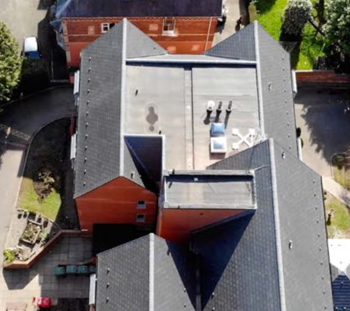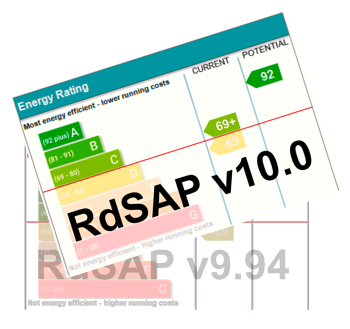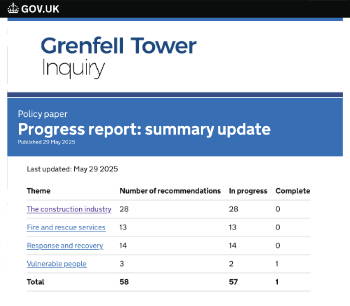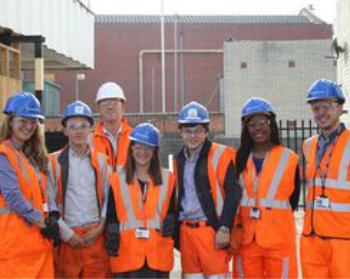Building Automation and Control System BACS
Contents |
[edit] Introduction
The term 'Building Automation and Control System' (BACS) refers to centralised systems that monitor, control, and record the functions of building services systems. Building facilities that are monitored and controlled by a reliable BACS tend to maintain the building environment more efficiently and so reduce the building's environmental impact and energy costs.
The core functions of a BACS system are as follows:
- Maintain control of the building's environment.
- Operate systems according to occupancy and energy demand.
- Monitor and correct the performance of systems.
- Sound alerts as required.
The facilities that may be controlled by a BACS system include:
- Mechanical systems.
- Plumbing.
- Electrical systems.
- Heating, ventilation and air-conditioning (HVAC).
- Lighting control.
- Security and surveillance.
- Alarms.
- Lifts.
There is growing overlap between the concepts of BACS and the need to learn from the accumulated data to operate buildings more efficiently. Increasingly this includes technologies such as the internet of things to become smart buildings.
[edit] Components
The basic components of a BACS are:
- Sensors: Measure values such as temperature, humidity, lighting levels, room occupancy, and so on.
- Controllers: Instigate the system's response from the collected data, using algorithms that apply logic and send commands.
- Output devices: Carry out commands from the controller.
- Communications protocol: The 'language' used by the BACS components.
- Dashboard: The user interface for data reporting and interaction with the BACS system.
[edit] Terminology
Approved Document L, Conservation of fuel and power, Volume 1: Dwellings, 2021 edition incorporating 2023 amendments, defines Building automation and control system as: ‘A system comprising all products, software and engineering services that can support energy efficient, economical and safe operation of heating, ventilation and air conditioning systems and on-site electricity generation through automatic controls and by facilitating the manual management of those building systems.’
There are a number of similar terms that can be used to refer to building automation, such as Building Management System (BMS), Building Control System (BCS) and Building Automation System (BAS). However, BACS is the standard term as defined by EN ISO 16484-2:2004 Building automation and control systems (BACS) -- Part 2: Hardware, 3.31.
BMS and BCS are general terms for systems that control a building's facilities. However, unlike BACS, they are not necessarily automation systems.
The phrase Building Energy Management Systems (BEMS) is sometimes used interchangeably with BACS, however, BEMS deal specifically with energy consumption, metering, and so on. It is generally considered though that there is sufficient overlap between the two that they can be used interchangeably.
[edit] Related articles on Designing Buildings
- Air conditioning.
- Artificial intelligence.
- Artificial intelligence in buildings.
- BACS building automation controls - the information revolution.
- BS EN 15232 Energy performance of buildings: impact of building automation, controls and building management.
- BSRIA announces 2021 European HVAC field device study.
- BSRIA 2024 North America BACS software & services market study.
- BSRIA study shows uptake of convergence and IoT in commercial buildings.
- BSRIA study: The market for European Field Devices.
- BSRIA World Building Automation and Control Systems 2022.
- Building energy efficiency - is building automation the answer?
- Building energy management systems BEMS.
- Building management systems.
- Building services.
- Commercial building automation market.
- Cyber threats to building automation and control systems.
- Edge devices.
- European BACS Market 2019 - 2024.
- Energy management and building controls.
- Global BACS Market: analytics and optimisation.
- Global BACS market resilience.
- Global building energy management systems market.
- HVAC.
- Internet of things.
- Internet of things in commercial buildings.
- Mechanical, electrical and plumbing MEP.
- Parking reservation systems.
- Plant room.
- Smart buildings.
- US Smart Connected HVAC in Commercial Buildings Study 2017.
- Wireless vs wired building energy management system.
[edit] External resources
Featured articles and news
Professional practical experience for Architects in training
The long process to transform the nature of education and professional practical experience in the Architecture profession following recent reports.
A people-first approach to retrofit
Moving away from the destructive paradigm of fabric-first.
International Electrician Day, 10 June 2025
Celebrating the role of electrical engineers from André-Marie Amperè, today and for the future.
New guide for clients launched at Houses of Parliament
'There has never been a more important time for clients to step up and ...ask the right questions'
The impact of recycled slate tiles
Innovation across the decades.
EPC changes for existing buildings
Changes and their context as the new RdSAP methodology comes into use from 15 June.
Skills England publishes Sector skills needs assessments
Priority areas relating to the built environment highlighted and described in brief.
BSRIA HVAC Market Watch - May 2025 Edition
Heat Pump Market Outlook: Policy, Performance & Refrigerant Trends for 2025–2028.
Committing to EDI in construction with CIOB
Built Environment professional bodies deepen commitment to EDI with two new signatories: CIAT and CICES.
Government Grenfell progress report at a glance
Line by line recomendation overview, with links to more details.
An engaging and lively review of his professional life.
Sustainable heating for listed buildings
A problem that needs to be approached intelligently.
50th Golden anniversary ECA Edmundson apprentice award
Deadline for entries has been extended to Friday 27 June, so don't miss out!
CIAT at the London Festival of Architecture
Designing for Everyone: Breaking Barriers in Inclusive Architecture.
Mixed reactions to apprenticeship and skills reform 2025
A 'welcome shift' for some and a 'backwards step' for others.





















